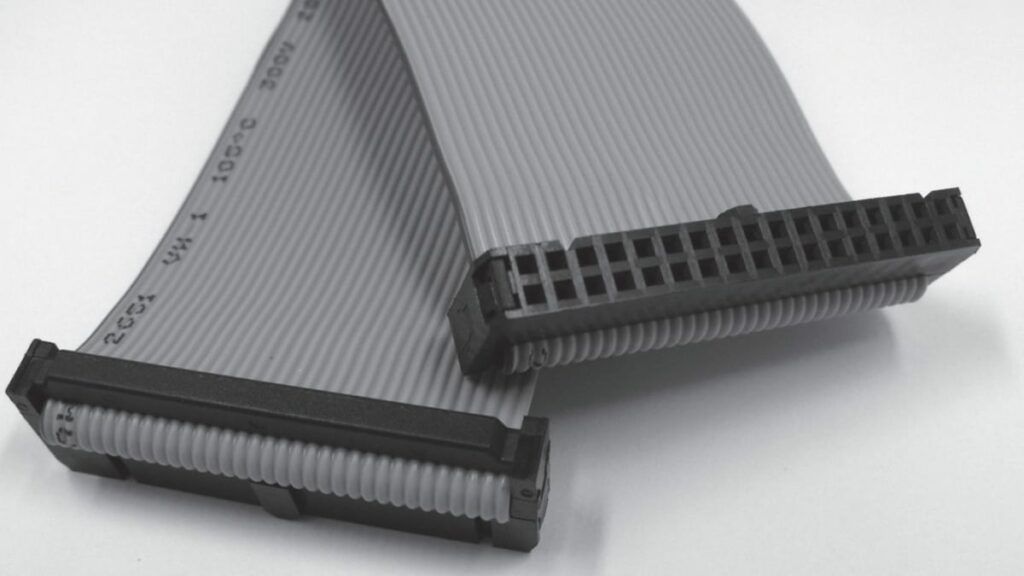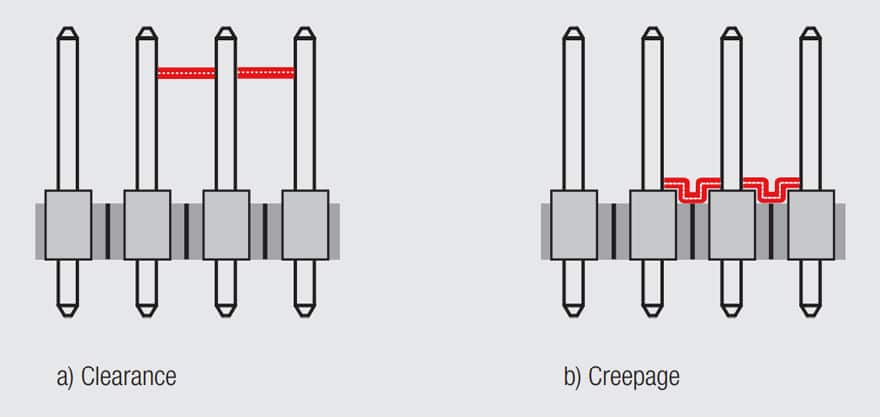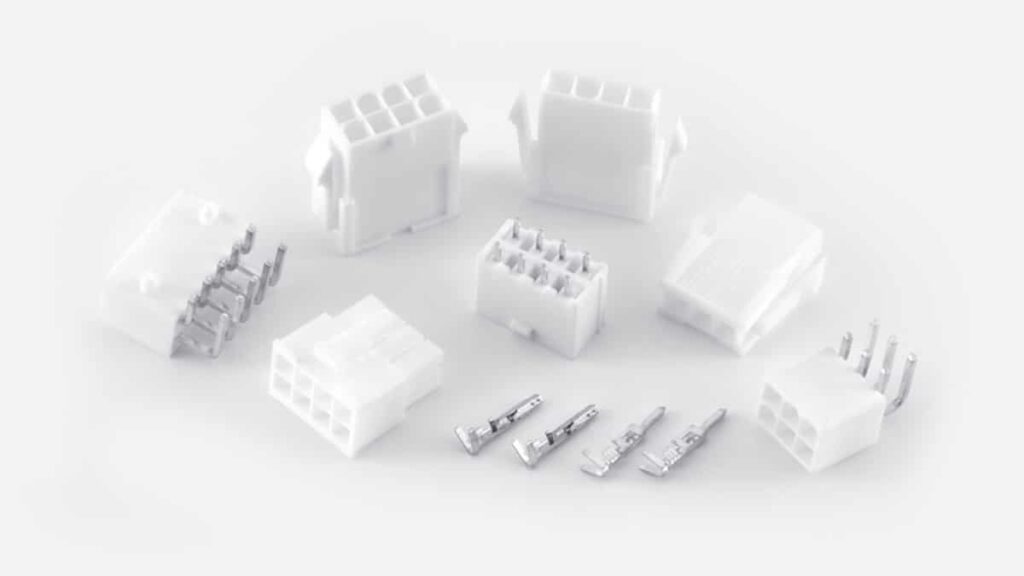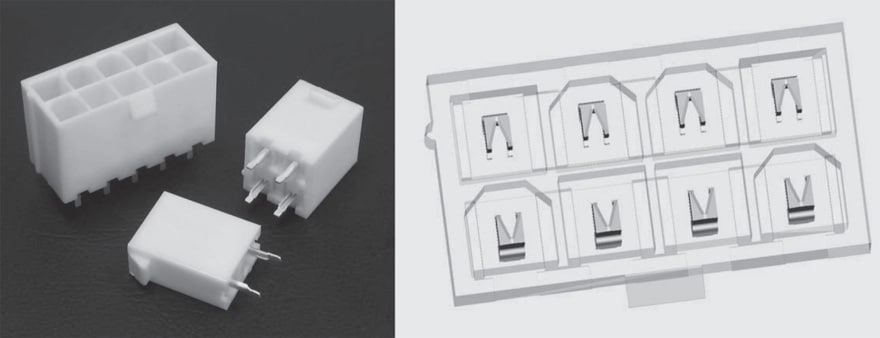Housing design considerations are different for signal, low current and voltage, and power, high current and voltage, connectors. For signal connectors, as noted previously, the major issue is connector miniaturization and its impact on mold design and molding practices. For power connectors there are safety and performance related housing design issues.
There is an additional signal connector issue to be addressed with respect to IDC connectors, strain relief features. As noted in Chapter II/2.2 Contact Springs. IDC connectors can benefit from strain relief features to diminish the potential for stresses parallel to the axis of the IDC slot disturbing the IDC connection. Some of these features are incorporated into the housing directly while the use of external covers is also an option. Figure 2.106 shows a strain relief cover for an IDC connector.

There are two safety related housing design features included in power connectors. Creepage and clearance distances are defined in standards issued by organizations such as VDE and UL. Figure 2.107 illustrates these distances. Clearance is the distance between two contacts in air and creepage is the distance from contact to contact along the surface of the housing. Creepage distance is directed to ensuring that dielectric breakdown of air, arcing, does not occur between contacts. Creepage addresses the potential for electrical degradation of the housing surface resistance of the polymer. A second approach towards the same end is to put the contacts in recesses or silos in the housing. An example of contacts in a recesses and silos is provided in Figure 2.108 One purpose of these features is to “finger proof” the contacts, that is to prevent a finger from shorting across a live contact pair resulting in an electric shock. Contacts within a recess or silo do not have a clearance issue, but creepage distance is still a requirement.


An additional power connector housing design feature is to provide passages for air flow through the housing for cooling of the contacts to minimize the effects of Joule heating on the contact temperature. An example of such features is shown in Figure 2.109.
































